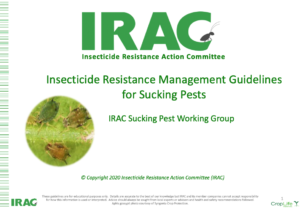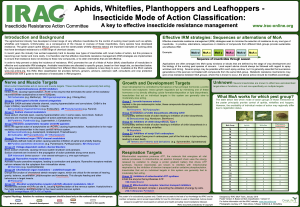Citrus red mite
Panonychus citriThe Citrus red mite (Panonychus citri) is an economically important pest of citrus globally. Although citrus is the main host, it can also infest other fruit trees including pome and stone fruits. Adult mites and their nymphs feed on the fruit, leaves and twigs of the host plant and can cause defoliation, discoloration and reduced quality of the fruits. It is thought that the citrus rust mite originates in Asia, but global transportation of plant stock and ornamental citrus plants helps to spread the pest.
The citrus red mite that has a short generation time and high fecundity. These life cycle features combined with the long duration of protection needed to prevent damage to citrus crops often results in prolonged and repeated exposure to insecticides and acaricides. This persistent exposure can and has led to the development of pesticide resistance.
Citrus red mite resistance profile
In several locations the citrus red mite has developed field derived resistance to several classes of insecticide/acaricides. Many reports of resistance have originated from China, Turkey and Iran, however this does not exclude that citrus red mite may have developed resistance in other regions of the world.
| Species | Distribution | Chemical class | Mechanisms |
|---|---|---|---|
| Panonychus citri | Japan | Organophosphates (1B) | Unknown |
| Panonychus citri | China | Pyrethroids-Pyrethrins (3A) | Esterase (metabolic) |
| Panonychus citri | Iran | Pyrethroids-Pyrethrins (3A) | F1538I (Target site) |
| Panonychus citri | China | Avermectins-Milbemycins (6) | GST (metabolic) |
| Panonychus citri | Turkey | Avermectins-Milbemycins (6) | GST (metabolic) |
| Panonychus citri | China | Clofentezine-Hexythiazox-Diflovidazin (10A) | Unknown |
| Panonychus citri | Turkey | Etoxazole (10B) | Unknown |
| Panonychus citri | Turkey | Organotin miticides (12B) | Unknown |
| Panonychus citri | Turkey | Tetradifon (12D) | Unknown |
| Panonychus citri | Japan | Acequinocyl (20B) | G126S (Target Site) |
| Panonychus citri | Japan | Acequinocyl (20B) | A133T (Target Site) |
| Panonychus citri | China | Bifenazate (20D) | G126S (Target Site) |
| Panonychus citri | Japan | Bifenazate (20D) | A133T (Target Site) |
| Panonychus citri | Belgium | Bifenazate (20D) | |
| Panonychus citri | Italy | Bifenazate (20D) | |
| Panonychus citri | China | METI acaricides and insecticides (21A) | H92R (target site) |
| Panonychus citri | Iran | METI acaricides and insecticides (21A) | |
| Panonychus citri | Japan | METI acaricides and insecticides (21A) | |
| Panonychus citri | China | Tetronic and Tetramic acid derivatives (23) | Unknown |
| Panonychus citri | Turkey | Tetronic and Tetramic acid derivatives (23) | Unknown |
| Panonychus citri | China | Beta-ketonitrile derivatives (25A) | Unknown |
| Panonychus citri | Turkey | Compounds of Unknown or Uncertain MoA (UN) | Unknown |
| Panonychus citri | Japan | Compounds of Unknown or Uncertain MoA (UN) | Unknown |

